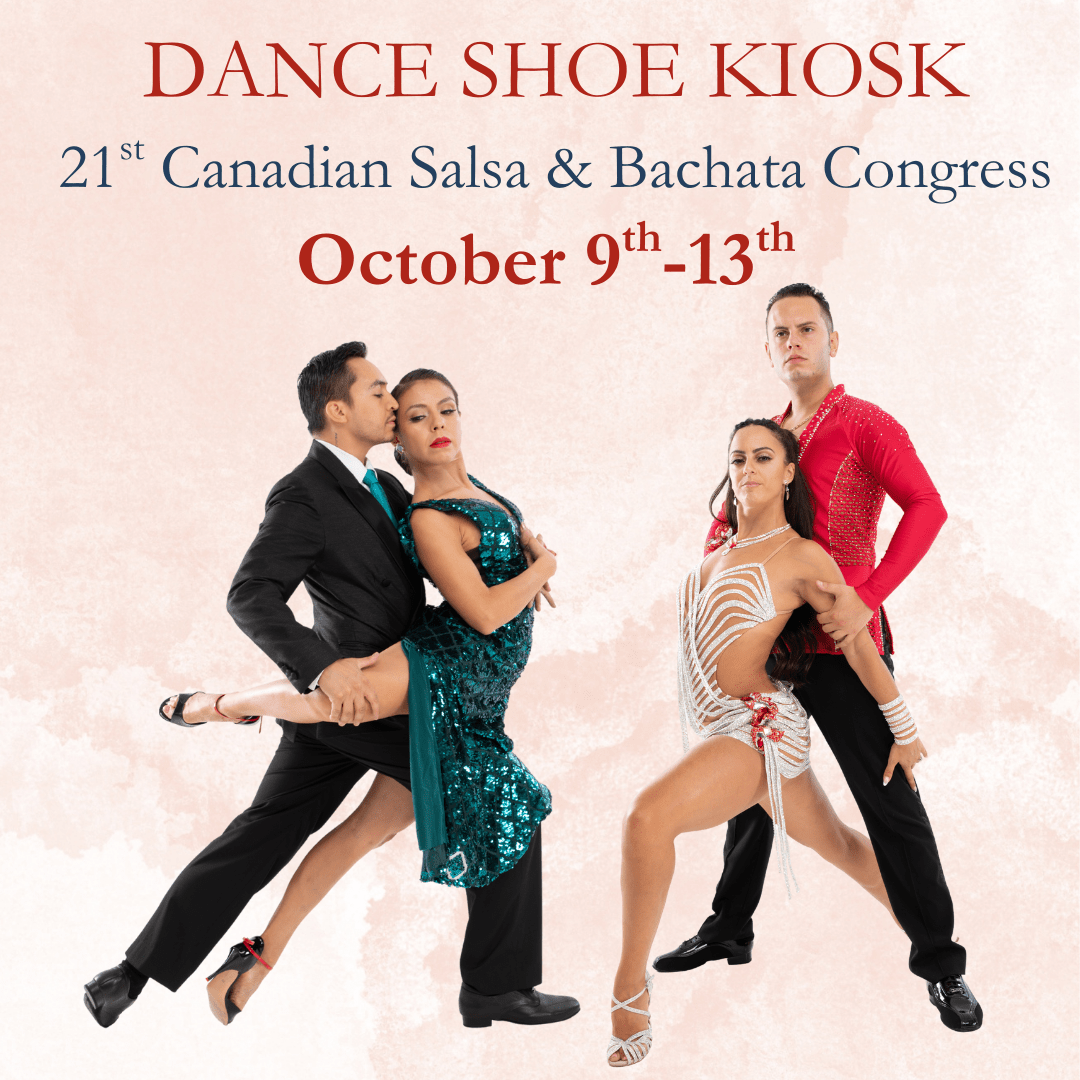Beneath a bright sun and the fronds of palm trees, the streets are packed with floats and people moving to the beat of the drum, tamborim, and the ganzá. The floats are a riot of blues, pinks, reds, greens, and every other colour under the sun and the dancers in the parade wear feathers and sparkle. The energy rises in waves, hotter than the sun beating down on the pavement. People are singing, laughing, dancing, moving with the joy of the dance and the joy of being alive.
This is Carnaval in Rio. And this is Samba.
As Alma Guillermoprieto, a Mexican journalist who wrote extensively on Latin America, said: “There is no point to Samba if it doesn’t make you smile.” One might also add: if you’re not smiling while dancing Samba, you’re doing it wrong (just sayin’). The beat of the music and the roll of the hips gets in your blood and when you move it’s an extension of the notes, full of life and laughter. Whether it’s the solo Carnaval version, club-style Samba de Gafieira, or Ballroom Samba there is no feeling like it.
ORIGINS
(note: the following concerns the origins of solo Samba, not Ballroom Samba. I’ll get that shortly.)
Samba originated in Brazil in the 19th century and owes its creation and style -- rhythm, movement, music -- to the African slaves working on Brazilian sugarcane plantations. The sensuous hip movement that characterizes the dance comes from the Congolese and Angolan circle dances (1). The word “samba” likely comes from the Kimbundu (Angolan) word “semba” which has two different but connected meanings: it was an invitation to dance as well as a name for dance parties held by slaves and former slaves in the rural areas of Rio (2).
It was not until May 13, 1888, that the imperial family passed Lei Aurea, “the Golden Law”, to abolish slavery in Brazil -- the last country in the Western Hemisphere to formally do so (3). Once the law was passed, the freed slaves began to leave the plantations for shantytowns (“favelas” in Portuguese) outside the cities. Here, dancers began to assemble dance troupes for the Rio Carnaval. As with many other dances, Samba was deemed inappropriate by the upper classes due to its unrestrained and vibrant performances...needless to say, the opinion of the upper classes meant little and soon Samba was crossing classes as well as geographical borders. Now Carnaval and Samba are practically synonymous.
The Samba danced in Carnaval is a solo dance. It was popularized in North America thanks to Carmen Miranda’s performances in That Night in Rio while a partner variation of the dance known as the carioca came to attention thanks to Fred Astaire and Dolores Del Rio’s performances in Flying Down to Rio in 1933. However, it was the exhibitions in the Brazilian pavilion at the World’s Fair in 1939 that truly made North America fall in love with the Samba phenomenon (4).
SOLO SAMBAS & CARNAVAL
The most well-known forms of solo Samba are Samba no pé and Samba Axé.
Samba no pé is the traditional solo variation “with simple, recognizable steps spontaneously inspired by the music. It follows a 2/4 count with three steps in every measure, a basic step-ball-change” (5). There is no travelling involved in the basic backwards and forwards step. The knees are kept relaxed and as you get into the beat and rhythm, the Samba bounce will happen naturally because your knees are relaxed and the hips will move with the shifts in weight as you step. Arms swing naturally at the sides. The “samba bounce action gives the dance its unique look and feel…[it] is a gentle, rhythmic action felt through the knees and ankles” (6).
Samba Axé is a modernization of the traditional solo dance that features more aerobic movements and much more bounce. “Music groups release new songs with choreography tailored to each song...so Samba Axé is always changing, with specific moves dependent on the lyrics. Typically the dance will start slow and progress to rapid tempo” (7).
These solo dances are what you will see during the Samba Carnaval parades in Brazil that occur before Lent. Carnaval is not a recent phenomenon but actually dates back to the 1640s, when it was a Greek-inspired feast that gave honour to the wine gods. The Portuguese combined their own festival ‘Entrudo’ and the modern seed of Carnaval was planted. Polka and Waltz were the primary dances in 1840 but, as previously stated, with the emancipation of the slaves Carnaval took on a whole new flavour (8).
The modern Samba parade in Rio is a major event and while once it was held downtown, it has been moved to the Sambódromo which was built especially for the event. The parade is actually a competition between Samba schools. Each school is made up of thousands of participants from the surrounding community, so each school’s performance is a spectacle on a grand scale. First a song is chosen -- and that’s a competition in itself! -- then there are choreography and floats and costumes to create. Given the sizes of the schools, each performer has a specific role and place in the performance. Themes range from the mythical to the historical and everything in between. (9)
Carnaval video:
Samba dance competition (note that while full nudity is not allowed, Sambistas wear very little when competing):
SAMBA DE GAFIEIRA
If you go to Brazil and want to go Samba dancing, do not break out your Ballroom Samba because that is not what clubbers will be dancing -- they will be dancing the “Tango of Brazil”.
Samba de Gafieira is a combination of many dances -- Carnaval Samba, Waltz, Argentine Tango, Salsa, Maxixe, to name a few -- and originated in the1940s in the gafieiras, the working class dance halls of Brazil (10). It’s basic step resembles that of the Salsa basic and is a quick-quick-slow or slow-quick-quick timing. Outside partner, as in Argentine Tango, is common as is leading into figures such as ochos, sacadas, cambios, etc. Given that the dance is such a blend, its potential for improvisation and creativity is boundless.
BALLROOM SAMBA
Ballroom Samba is its own entity and while it does borrow from the solo Sambas and it is actually very far removed from Brazilian Samba and is more Latin in flavour. It’s a partner dance and was standardized as ballroom dance in 1956 (11).
The Ballroom Samba bounce comes from a compression and straightening of the knees -- but the goal is not to have a real rise and fall. The head should stay fairly level. One way to think of it, is that you are bending your knees forward not down. Compression, absorption, and release. The hip action in Ballroom Samba comes from contracting the abdominal muscles and tucking the tailbone under, resulting in a pelvic tilt. Neither action should be overdone but combined fluidly, and are part of what makes this dance sizzle. For an excellent breakdown of the Ballroom Samba bounce, see this part of a lecture by Riccardo Cocchi and Yulia Zagoruychenko:
Interestingly, the styling of Ballroom Samba has changed over the decades. In the 1970s, Samba was danced with a very “European” style: contact with the floor was very light and while there was de/compression of the knees, there was no pelvic hip action involved. Arm movements were used to create volume and did not incorporate full body movement. In the 1990s, the dance was reshaped and took on more Latin flavour, including much more fluid movements of the torso. The pelvic action was also restored. In the 2000s, the dance evolved still further to include closer body contact and more grounded footwork.
To give you an idea of what Ballroom Samba used to look like, here is a clip of Walter Laird and Lorraine Reynolds performing in 1971:
Needless to say, the Ballroom dance has evolved. A lot. In my opinion, the modern Ballroom Samba is a return to the earthiness of Brazilian Samba: it’s a vibrant, joyous, sexy dance and, for all its differences from its Brazilian counterpart, retains the joy of being alive and the joy of the movement. The following are some of my favourite showdance Sambas by Yulia & Riccardo, and Slavik & Karina.
Riccardo and Yulia:
Slavik and Karina Showdance:
***
So this is Samba. I might be a little obsessed. Just a little.
I’ll see you on the floor.
FOOTNOTES:
(1) National Geographic.
(2) Ibid.
(3) Park, Michelle.
(4) Crawford, Benna.
(5) Ibid.
(6) Bedinghaus, Treva.
(7) Crawford, Benna.
(8) https://en.wikipedia.org/wiki/Rio_Carnival
(9) Rio-Carnaval.net
(10) Heritage Institute, “Samba de Gafieira.”
(11) Ballroom Dance Academy.
(12) Sweet, Michael.
REFERENCES:
Ballroom Dance Academy. “Samba.”
http://www.ballroomdanceacademy.com/the-dances/descriptions-of-dances/samba/
Accessed 30 April 2019
Bedinghaus, Treva. “All About the Sexy Samba Style of Dance.” https://www.thoughtco.com/samba-dance-basics-1007202 Accessed 30 April 2019
Celebrate Brazil. “Samba Dance Brazil.” https://www.celebratebrazil.com/samba-dance-brazil.html Accessed 30 April 2019
Cocchi, Ricardo and Yulia Zagoruychenko. Youtube. https://www.youtube.com/watch?v=GsMMQUw_OTQ Accessed 30 April 2019.
Crawford, Benna. “Samba Dance History.” https://dance.lovetoknow.com/Samba_Dance_History Accessed 30 April 2019
Heritage Institute. “Samba.” https://www.heritageinstitute.com/danceinfo/descriptions/samba.htm Accessed 30 April 2019
Heritage Institute. “Samba de Gafieira.” https://www.heritageinstitute.com/danceinfo/descriptions/gafieira.htm Accessed 30 April 2019
National Geographic. “A historía do samba.” http://sambassadorsofgroove.org.uk/history-of-samba.html Accessed 30 April 2019
Opene, Nneka. “Samba de Gafieira: The Tango of Brazil.” http://atomicballroom.com/blog/2015/04/21/samba-de-gafieira-the-tango-of-brazil/ Accessed 30 April 2019
Park, Michelle. “History of Slavery and Abolition in Brazil.” https://exoduscry.com/blog/general/history-of-slavery-and-abolition-in-brazil/ Accessed 30 April 2019
Rio-Carnival. “Rio de Janeiro Samba Parades.” https://www.rio-carnival.net/en/samba-parade Accessed 30 April 2019
Sweet, Michael. “Brazilian Samba’s Translation and Dialogue with International Dancesport.” https://library.brown.edu/create/modernlatinamerica/chapters/chapter-15-culture-and-society/essays-on-culture-and-society/samba-dancespor/ Accessed 30 April 2019




